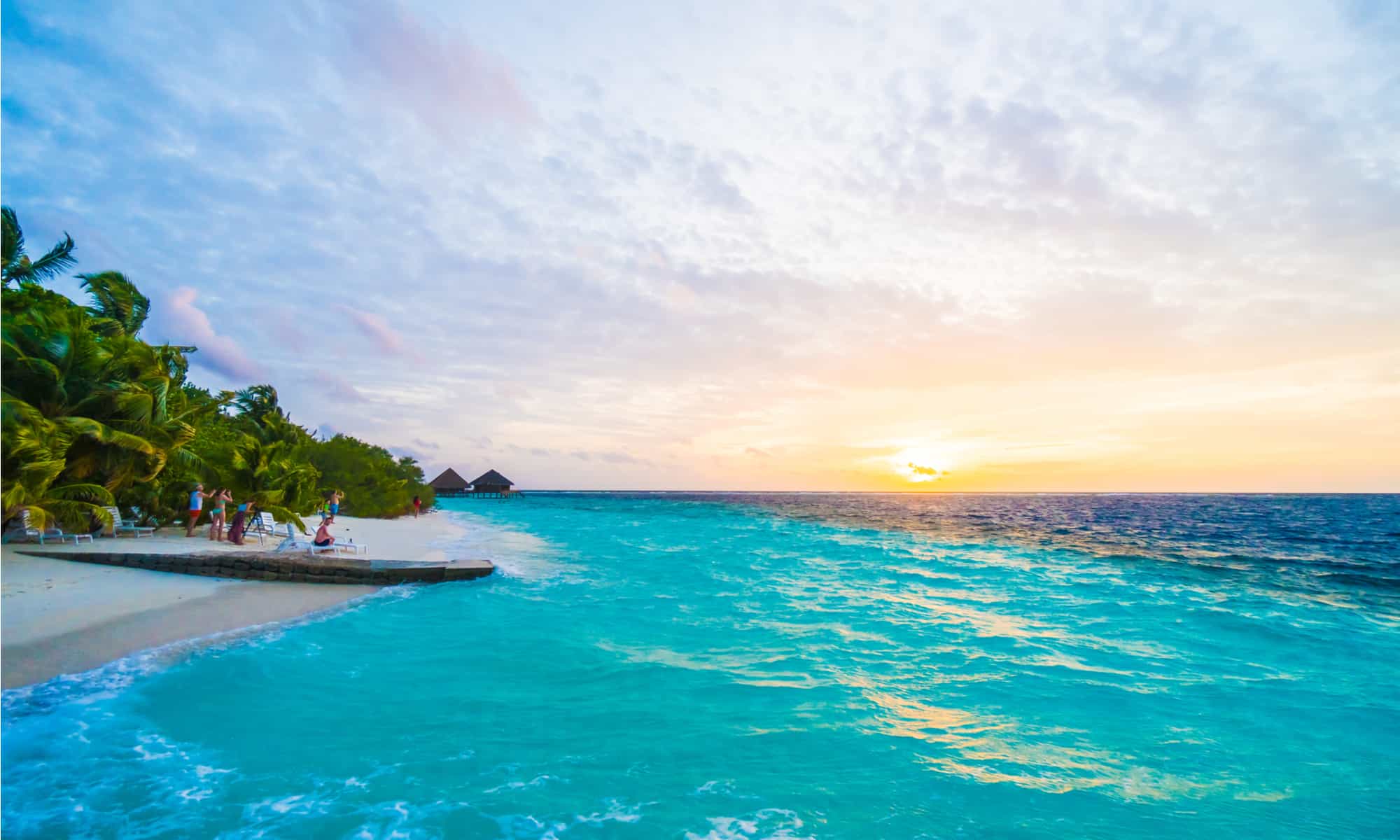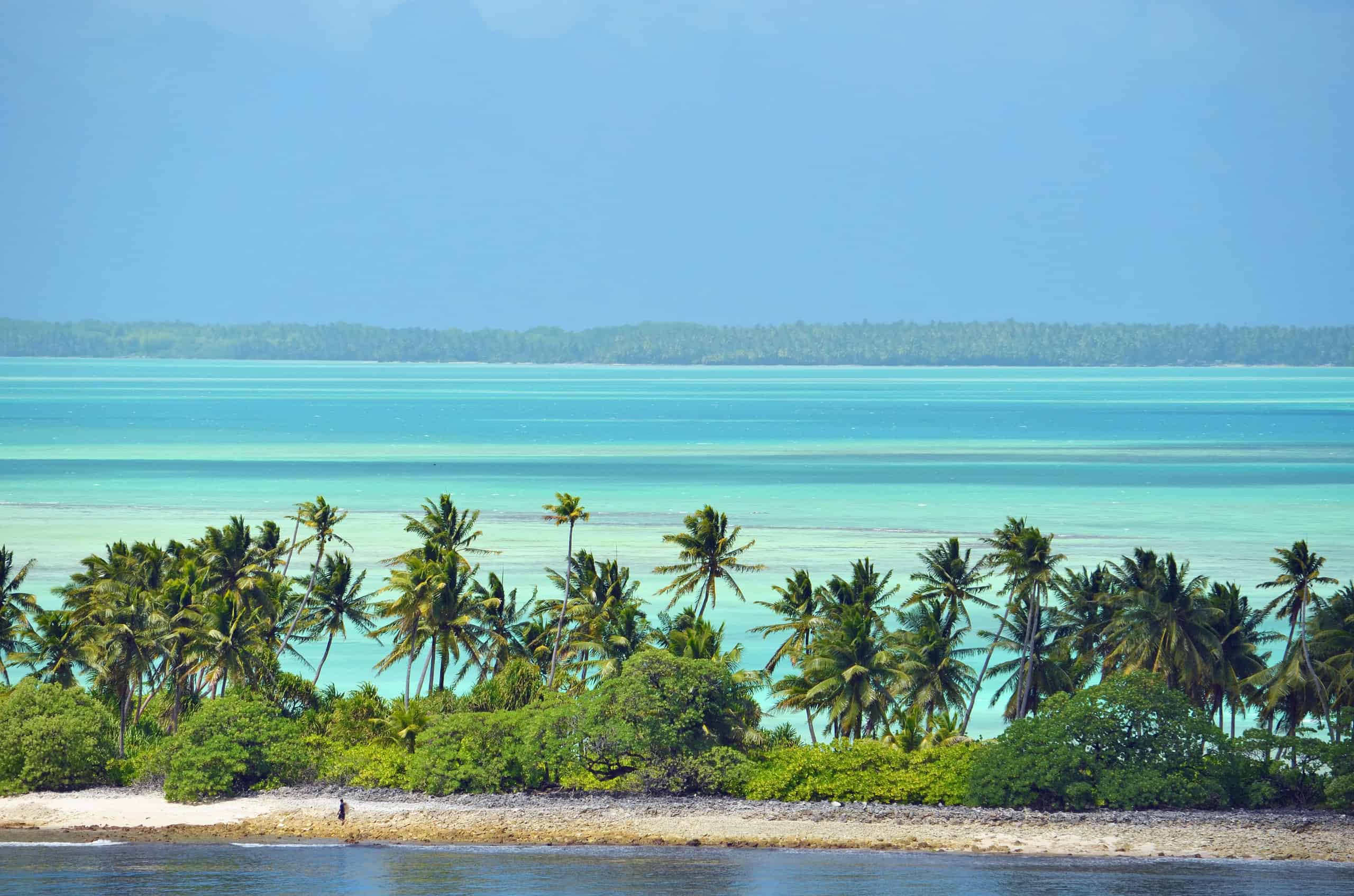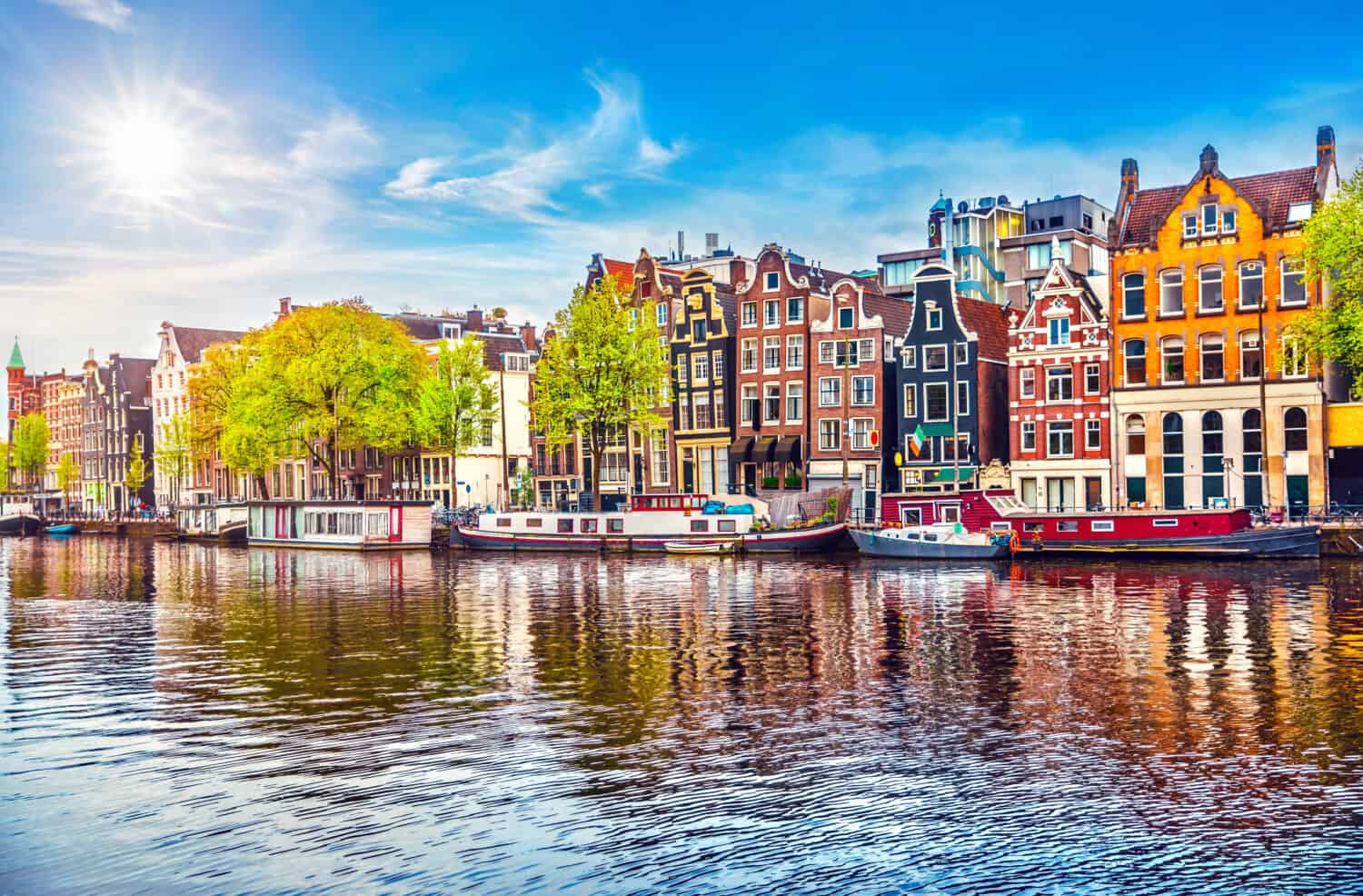If the world’s sea levels are rising at a rate of half a fingernail’s thickness a year, should you be concerned? What if that rate accelerated to the thickness of a cell phone a year? Now is it an emergency? What if that resulted in an ocean that was 7 feet deeper? Believe it or not, in that scenario, four countries could disappear completely from the map! If you don’t live in one of them, maybe it doesn’t seem like that big a deal. However, no matter where you live, rising sea levels will affect your bottom line in pretty dramatic ways. Read on to discover which countries are sinking, and how they might just take your wallet down with them.
What’s Causing Sea Levels to Rise?

Melting polar ice is affecting populations of Arctic wildlife like polar bears.
©Mario_Hoppmann/iStock via Getty Images
The fact that the planet is heating up and the oceans are rising is indisputable, but the causes of it are a matter of controversy. Some people insist that it is part of the planet’s natural cycles of heating and cooling. Others point out that global warming has dramatically increased in the past century since fossil fuels became a major energy source and began pumping greenhouse gasses into the atmosphere. Climate scientists say that the current increase in sea levels is due not only to melting glaciers and ice caps but also to thermal expansion of the water itself as it warms.
According to the National Oceanic and Atmospheric Administration, since 1880 the sea level has risen 9 inches. In the period between 2006-2015, the rate of sea level rise doubled from what it was the entire previous century. If these trends continue, by 2100, the ocean level could rise over 7 feet! What will that mean for you?
How Will Rising Sea Levels Affect You?

In the future, your trip to the
beach might end in Central Florida
.
©PeopleImages/iStock via Getty Images
Even if you live pretty far inland, here’s how rising sea levels could still impact you:
- Saltwater may pollute rivers and groundwater miles inland. Fresh water may become scarcer everywhere. Agriculture will suffer and food prices will rise.
- Millions of displaced people will move further inland. The country may also accept more international refugees.
- Homes, businesses, and infrastructure will be destroyed not only along the coast but also far inland along riverfronts.
- Insurance rates will rise for everyone as property owners file claims over inundated property.
- Tax money will be redirected to rebuilding vital ports, shipyards, and naval bases, and creating seawalls and river levees to protect cities and valuable property from flooding.
- Hurricanes and their storm surges will move further inland and do more damage. Storms will be more violent and unpredictable in a warmer climate.
- Wildlife will be displaced. Species you might not enjoy, like alligators and invasive pythons, may move substantially further inland.
On the bright side, your inland house might become beachfront property. But for how long, before it’s at the bottom of the ocean too? That worst-case scenario could be a reality sooner rather than later for the following four countries.
1. Maldives

You’ll have to enjoy the Maldives by boat if sea levels don’t stop rising.
©Lifestyle Travel Photo/Shutterstock.com
The Maldives is a country in the Indian Ocean made up of about 1,200 islands. With an average elevation of 5 feet, it is the lowest-elevation country in the world. If the country were lost, along with it would go its world-famous white coralline sand, found on only 5% of beaches in the world. The population is 522,000, all of whom would have to be evacuated in the worst-case scenario. Fortunately, India is close by so they would not have to go far to reach land.
The Maldives has some advantages that could help it through such a disaster. About 130,000 people living there are foreigners who could advocate in their native countries for assistance to the islands. The country could potentially receive financial assistance and resettlement areas for refugees from its fellow Islamic countries. Neighboring India might have an interest in preserving some of the islands as naval bases or as a basis for claiming fishing and mineral rights. Artificially building up the most strategic islands at the country’s extremities could preserve it as a nation of fewer islands and a reduced population.
2. Tuvalu

Many of Tuvalu’s islands are the barely-exposed tops of coral reefs.
©Maximilien Leblanc/iStock via Getty Images
Tuvalu is a nation made up of four reef islands and five coral atolls located halfway between Australia and Hawaii. Its average elevation is only 6 feet. It is one of the least-visited countries in the world because it is so geographically remote. Losing such an unspoiled place would not only be a natural disaster but a loss of a beautiful remnant of our world’s past.
Tuvalu’s population is only 11,200. Considering that the crew of a U.S. aircraft carrier is 5,000 sailors, the whole country could be evacuated with relatively few international ships. If an effort were made to shore up one of the islands to prevent it from sinking, that island would likely be Funafuti Atoll, where half of the country’s people live.
3. Kiribati

Fanning Island is one of the pristine islands of Kiribati.
©iStock.com/EvaKaufman
One of the remaining threatened countries is the Republic of Kiribati. With a population of 133,500, Kiribati consists of 32 atolls scattered over 3.4 million miles of the Pacific Ocean. By 1999, two unpopulated islands of the country were already submerged. Kiritimati (Christmas) Atoll, one of the largest atolls in the world, is one of the global treasures that will be lost if sea levels continue rising.
Kiribati does have one coral island named Banaba that has a peak elevation of 266 feet. Most of Denmark (an average elevation 111 feet) would sink into the ocean before Banaba. However, the area of the island is only 2.3 square miles and only about 300 people live there. Clearly, only a small fraction of the country’s citizens could live on such a tiny island.
4. Marshall Islands

The city of Majuro is the capital of the Marshall Islands.
©KKKvintage/Shutterstock.com
Like Kiribati, the Republic of the Marshall Islands is a Pacific country that lies on average only 7 feet above sea level. 42,200 people call the Marshall Islands their home. Coral reefs surround many of the country’s 29 atolls to provide some defense against the surging ocean. It has five islands, with the highest elevation at only 32 feet. As hurricane storm surges can reach 25 feet or more, a 7-foot-deeper ocean combined with one strong hurricane could wipe every resident and building in the country out to sea.
The Marshall Islands are considered a biodiversity hotspot. Many of the islands’ species of marine life and insects are found nowhere else in the world. Not all of the sea life would be able to adjust to the deeper and warmer seas and stronger currents that could engulf these low-lying islands and their reefs.
How Can These Countries Be Saved?

In the Netherlands, 26% of land is below sea level, protected by sea walls.
©Yasonya/Shutterstock.com
- Stop global warming:This would slow and stabilize rising sea levels. However, the amount of carbon already in the atmosphere will cause temperatures to continue to rise for some years even after emissions decrease to a safer level.
- Build sea barriers: The Netherlands has built dikes and reclaimed land from the sea for centuries. However, it does not have to contend with frequent violent hurricanes as island nations do, nor the extremely deep seas around some of them.
- Build up the islands: China has been dredging the seabed and building up islands in the South China Sea to assert territorial claims and project military power in that region. The sinking island nations on our list do not have the financial or technical resources to do this for themselves.
- Get foreign partners: Countries can claim an Exclusive Economic Zone out to 200 miles at sea from all of their coastlines. Foreign countries might invest in helping doomed nations save some of their islands in exchange for fishing rights, undersea mining privileges, or leases for military bases.
The reality is that finding solutions to the threat facing these nations depends on cold hard cash. The nations that survive will have to demonstrate it is more profitable to save them rather than abandon them to the sea. And in a world where water is rising everywhere, that will be a tough sell.
The photo featured at the top of this post is © Zwiebackesser/Shutterstock.com
Thank you for reading! Have some feedback for us? Contact the AZ Animals editorial team.







